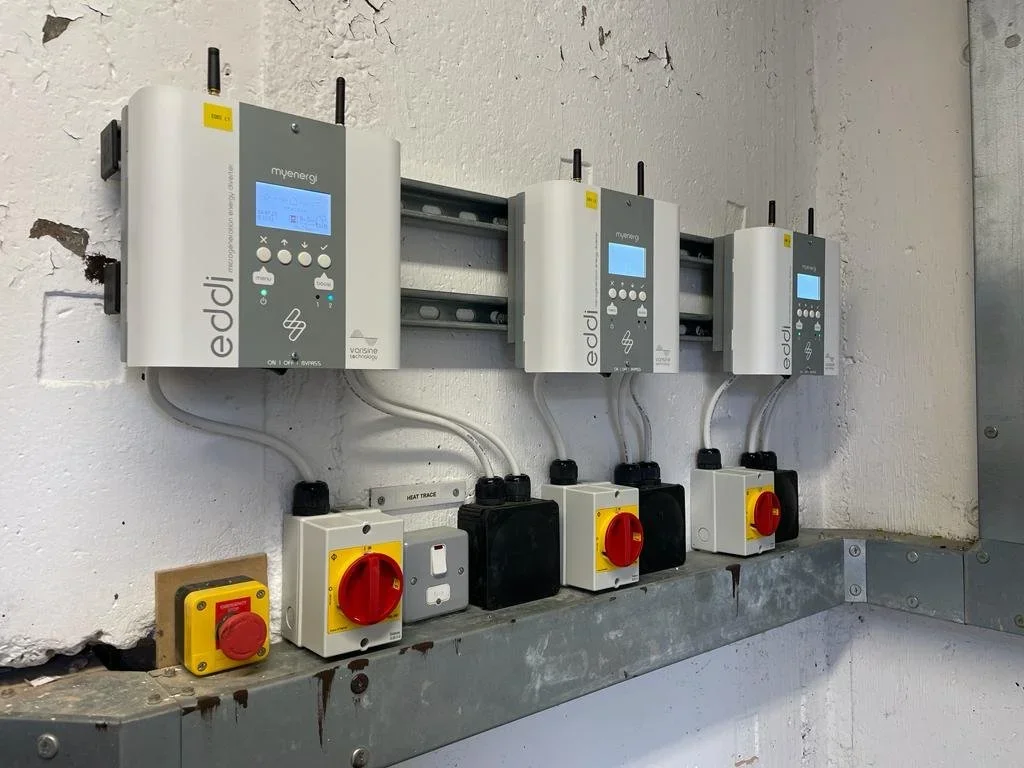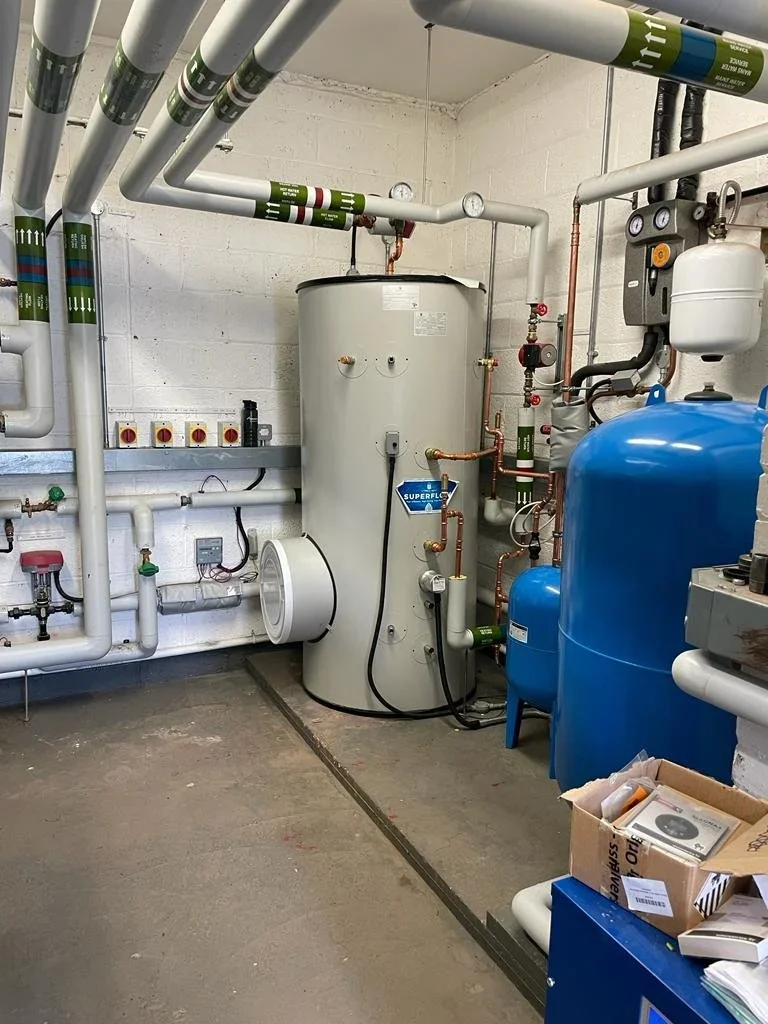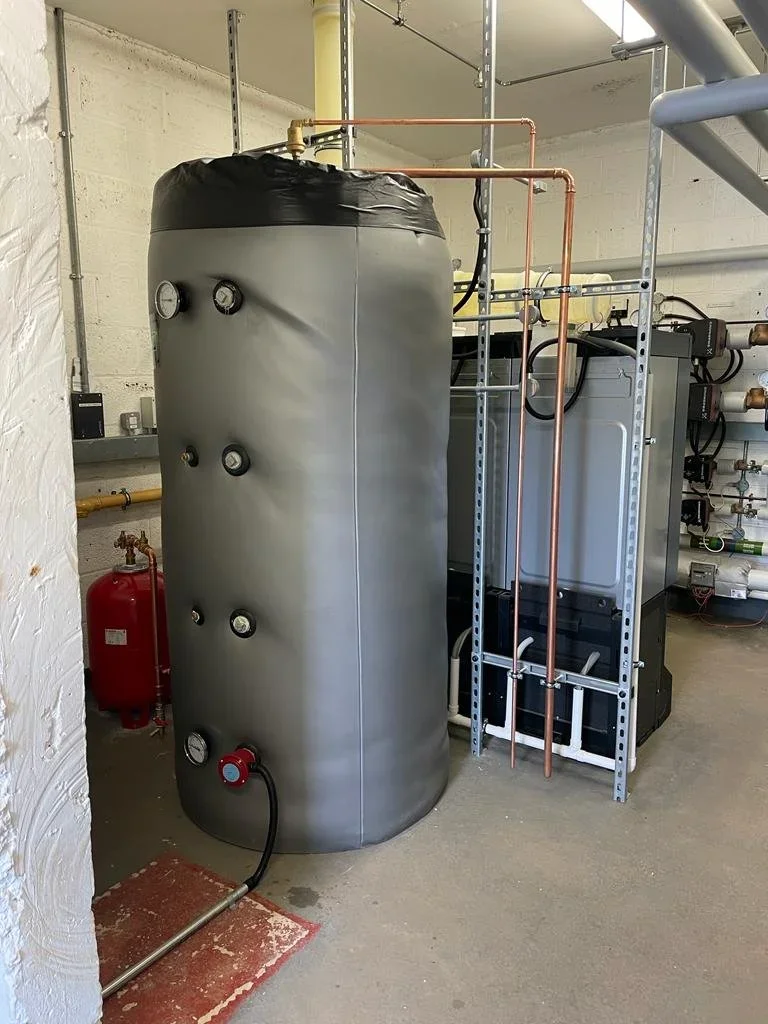Enhancing Heating Efficiency: The Role of Solar PV and energy diverter systems in care homes
In this blog post, we will explore the importance of efficient heating systems in care homes, specifically focusing on a recent project at another care home, this time involving Wakefield and District Housing. As part of extensive heating system upgrades to this site, we were tasked with installing a 12kW PV system and utilizing the energy it generated to its maximum potential. To achieve this, we opted for the Eddi system by MyEnergi due to its adaptability and versatile configuration options. Although using excess energy for space heating may seem counterintuitive, care homes generally require higher ambient temperatures year-round, making it a viable solution to reduce carbon emissions. How did the implementation of three Eddis help our client meet their requirements in this installation? Well..:
Energy Diversion for Heating and Hot Water: To effectively utilize the energy generated by the PV system, we installed energy diverters to aid in heating and hot water production. The Eddi system emerges (every single time) as the ideal choice due to its exceptional adaptability and configuration capabilities. By carefully setting up the system and incorporating MyEnergi relay boards and contactors, we were able to configure the Eddi system to manage substantial power diversion, ensuring optimal utilisation of excess energy.
Addressing Complexities in Three-Phase Installations: In the case of this project, the care home had a larger three-phase installation without net-metering, which presented certain complexities. Managing excess energy on a phase-by-phase basis required a thoughtful approach. To tackle this challenge, we implemented three Eddi systems and three Harvi remote monitoring devices. These systems are effectively managing the two 9kW three-phase immersion heaters, strategically placed in a heating buffer vessel and a large domestic hot water (DHW) vessel. The implemented setup is so far proving highly effective in delivering a low-carbon means of supplementary heat and power.
Focus on Lowering Carbon Emissions: While optimising revenue and achieving savings are often key considerations for energy management, the primary driver in this installation is to lower carbon emissions. Although utilizing excess energy from PV systems for space heating might not typically make sense, it makes sense here due to the need for higher ambient temperatures throughout the year. By implementing the Eddi systems, we have created a sustainable solution that aligns with the care home's objective of reducing its carbon footprint.
Conclusion: Efficient heating systems play a vital role in care homes, ensuring comfortable living conditions for residents while also prioritizing sustainability. The installation of a 12kW PV system accompanied by the implementation of three Eddi systems has significantly contributed to achieving a low-carbon, efficient means of heat and power. By utilizing excess energy generated by the PV system, we have successfully met the unique heating requirements of the care home. As we continue to prioritize sustainable solutions, projects like these demonstrate the positive impact of innovative technologies in creating a greener future for care facilities and beyond.



